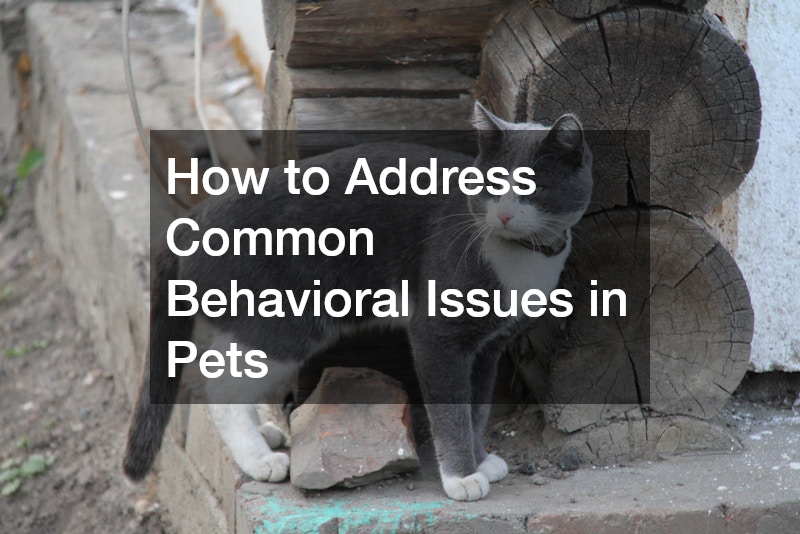Preparing Your Pet for Home Life
Pet education is an essential aspect of responsible pet ownership, shaping not only the behavior of animals but also the relationships between pets and their human companions. Just as children benefit from structured learning, pets also require guidance and training to ensure they grow into well-adjusted members of the household. Whether you’re introducing a new pet into your home or working to improve the behavior of a longtime companion, understanding the foundations of pet education is critical. This process involves teaching pets the basics of obedience, socialization, and even advanced skills, all of which contribute to their mental stimulation and overall well-being.

Understanding the Basics of Pet Education
At its core, pet education revolves around establishing clear communication between the pet and the owner. The first steps include teaching pets to respond to their names, follow basic commands, and understand household rules. These foundational lessons provide a framework for more complex training down the road. Pet education also involves creating a structured environment where pets can thrive emotionally and mentally. The goal is to guide a way that promotes positive behavior while discouraging unwanted habits. Whether you’re training a puppy or an adult dog, consistency is crucial to ensure that the lessons stick. Having patience and persistence during this stage can make a world of difference in shaping a well-behaved pet.
A practical starting point for pet education often begins during everyday activities, such as when giving your pet a dog wash. This routine offers a chance to teach your pet to stay calm and cooperative while being groomed. Teaching pets to remain still during grooming is an essential part of their education, ensuring they are comfortable in different situations. During this process, reinforcing commands like “sit” or “stay” helps strengthen their understanding of basic obedience while making the dog wash experience more manageable. Over time, pets learn to associate grooming with positive reinforcement, reducing anxiety and resistance.
The Importance of Early Socialization for Pets
Socialization is a fundamental part of pet education, particularly during the early stages of a pet’s life. Proper socialization exposes pets to various environments, people, and other animals, helping them develop confidence and reduce fear or aggression later on. Early socialization is vital for building a well-adjusted and friendly pet, especially if you plan on having your pet interact with visitors, and other pets, or spend time in public spaces. The earlier you introduce your pet to different experiences, the better they’ll adapt to new situations throughout their life. Without socialization, pets might develop anxiety, aggression, or even behavioral problems that can be challenging to manage.
A professional dog trainer can play a significant role in early socialization efforts, providing structured environments where pets can learn how to interact appropriately with others. Working with a trainer allows pets to encounter various stimuli in a controlled and safe manner. Trainers guide pets through exercises that build their confidence while encouraging positive social behaviors. Whether it’s learning how to approach other dogs or remaining calm in busy areas, a dog trainer helps lay the groundwork for long-term success in pet education.

Training Techniques for Different Pet Breeds
One of the fascinating aspects of pet education is the diversity of training techniques that can be employed based on the specific needs of different breeds. Every breed has its unique characteristics, behaviors, and learning styles, meaning what works for one pet may not be effective for another. Some breeds are naturally more independent and may require different motivational tactics, while others are eager to please and quickly grasp commands. Understanding the temperament and instincts of your pet’s breed is essential in developing an effective training strategy. By tailoring training techniques to your pet’s unique needs, you can optimize their learning experience and build a more harmonious relationship.
Using tools such as cameras can enhance pet education by allowing owners to monitor their pets’ progress even when they’re not physically present. Cameras can provide valuable insights into how pets behave when left alone, whether they exhibit separation anxiety, or if they follow commands when unsupervised. With this technology, pet owners can assess how well their training efforts are working and make adjustments accordingly.
Essential Commands Every Pet Should Learn
Teaching essential commands is a core component of pet education, as these commands form the basis of your pet’s ability to interact effectively with its environment and with people. Commands like “sit,” “stay,” “come,” and “down” are fundamental, not only because they ensure a well-behaved pet but also because they can keep pets safe in potentially dangerous situations. By mastering these commands, pets learn to follow their owner’s instructions even when distractions are present. Essential commands make everyday life smoother, whether you’re walking in a busy park, receiving guests, or engaging in routine tasks at home.
When teaching commands, the environment plays a significant role in how quickly pets adapt to their training. For instance, hardwood flooring can be a unique challenge for pets during training, as they may have difficulty maintaining their balance or positioning during exercises like “sit” or “stay.” In such cases, adjusting the training space or introducing non-slip mats can make it easier for pets to learn commands without the added stress of navigating slippery surfaces.

How to Address Common Behavioral Issues in Pets
As much as pet education focuses on teaching commands and socialization, addressing behavioral issues is equally critical. Common behavioral problems, such as excessive barking, chewing, digging, or even aggression, can stem from various causes like anxiety, boredom, or a lack of proper training. Pet owners need to identify the root cause of these behaviors and implement corrective measures as part of their pet’s education. Behavioral issues often develop over time if left unchecked, making it essential to address them as early as possible. Proper training techniques, paired with positive reinforcement, can go a long way in eliminating or reducing these issues.
The environment can play a significant role in mitigating behavioral problems. For example, luxury vinyl flooring is not only durable but also easy to clean, which is a practical advantage if your pet tends to engage in destructive behaviors like chewing or soiling. Flooring that is both pet-friendly and easy to maintain can reduce stress for both the pet and the owner, creating a more conducive environment for addressing behavioral issues.
Positive Reinforcement vs. Negative Reinforcement
One of the most debated topics in pet education is the use of positive reinforcement versus negative reinforcement. Positive reinforcement involves rewarding pets for desired behaviors, such as following a command or behaving calmly in a new environment. This reward-based approach helps pets associate good behavior with pleasant outcomes, encouraging them to repeat these actions. On the other hand, negative reinforcement entails using consequences or aversive stimuli to discourage unwanted behavior. While both methods can be effective, research increasingly supports positive reinforcement as the most humane and productive approach. Positive reinforcement builds trust between the pet and owner, fostering a relationship based on respect rather than fear.
The environment in which training occurs can impact how successful reinforcement techniques are. For instance, training your pet on carpeted surfaces can provide a more comfortable and secure setting, especially for activities that require a lot of movement, like playing fetch or practicing “come” commands. A local carpet company can offer pet-friendly carpeting options that resist stains and are durable enough to withstand the wear and tear that comes with pet training.

The Role of Consistency in Pet Training
Consistency is the cornerstone of effective pet education. Pets learn best when their training follows a routine and is reinforced regularly. Inconsistent training can confuse pets, making it harder for them to understand what behavior is expected. Whether you’re teaching basic commands or addressing behavioral issues, maintaining a consistent approach ensures that pets know the rules of the household and can follow them confidently. This includes sticking to a daily training schedule, using the same commands and gestures, and rewarding positive behaviors in the same way each time. Consistency builds trust and helps pets develop a reliable understanding of what is expected from them.
A comfortable, temperature-controlled environment also contributes to the consistency of pet education. For example, an AC repair company can ensure your home’s air conditioning system is functioning well, providing a stable and comfortable environment for training sessions. Pets, just like humans, can become irritable or lethargic in extreme temperatures, which can hinder their ability to focus during training.
Using Toys and Tools for Effective Pet Education
Toys and tools can be powerful aids in pet education, offering mental stimulation and helping pets channel their energy in productive ways. Interactive toys, such as puzzle feeders or chew toys, can provide pets with engaging activities that challenge their minds and improve problem-solving skills. Tools like clickers, treat dispensers, and training leashes also play important roles in reinforcing commands and shaping behavior. Incorporating toys into training routines not only keeps pets entertained but also makes learning fun, helping to reinforce positive behaviors and discourage boredom-driven behaviors like chewing or digging.
Having a safe and secure environment is also essential when using toys and tools for pet education. For example, if your garage is used as a space for play or training sessions, ensuring that it is well-maintained is crucial. Regular garage door repair ensures that the area remains safe, preventing accidents that could disrupt training or cause harm to your pet.
The Benefits of Professional Pet Training
While many pet owners choose to train their pets themselves, professional pet training services offer a range of benefits that can accelerate the education process. Professional trainers are skilled in addressing specific behavioral issues and customizing training techniques based on the individual needs of your pet. They can introduce advanced obedience skills, help manage aggression, and even provide socialization opportunities in a structured environment. Working with a professional trainer ensures that your pet receives expert guidance, which can be particularly helpful for busy pet owners who may not have the time or experience to handle more complex training challenges.
An organized and well-maintained outdoor space can also support professional pet training, especially for pets that require ample room for exercise and behavioral correction. Keeping your lawn in top condition by working with a lawn sprinkler repair service ensures that the area is always ready for outdoor training sessions. Pets benefit from having a consistent outdoor environment where they can practice commands and work through their training regimen.
How to Continue Pet Education Throughout Their Life
Pet education is not a one-time task; it is a lifelong commitment. As pets age, their needs, behaviors, and abilities may change, requiring ongoing training and reinforcement. Continuing pet education throughout their life ensures that pets remain well-behaved, mentally stimulated, and adaptable to new environments and situations. Senior pets, for example, might need refresher training to help them adjust to physical limitations, while younger pets might need more advanced training as they grow. Ongoing education also strengthens the bond between pet and owner, keeping communication clear and fostering mutual respect well into the later years of a pet’s life.
A well-maintained outdoor environment can contribute to the effectiveness of ongoing pet education. For example, using paving services to create safe, non-slip pathways in your yard or around your home ensures that pets have a secure area to move and play as they continue to learn new skills. Well-paved outdoor areas reduce the risk of injury and provide a stable surface for training exercises, making it easier for pets to navigate their environment confidently.
Maintaining Positive Pet Behavior
Pet education is a vital aspect of responsible pet ownership, shaping how pets interact with the world and their human companions. From the basics of socialization to advanced behavioral training, the process of educating a pet involves patience, consistency, and the right tools. Each pet, with their unique personality and breed characteristics, requires tailored training approaches to ensure their success. By focusing on positive reinforcement, maintaining a consistent training schedule, and incorporating toys and tools, pet owners can create an engaging and effective learning environment for their pets.
